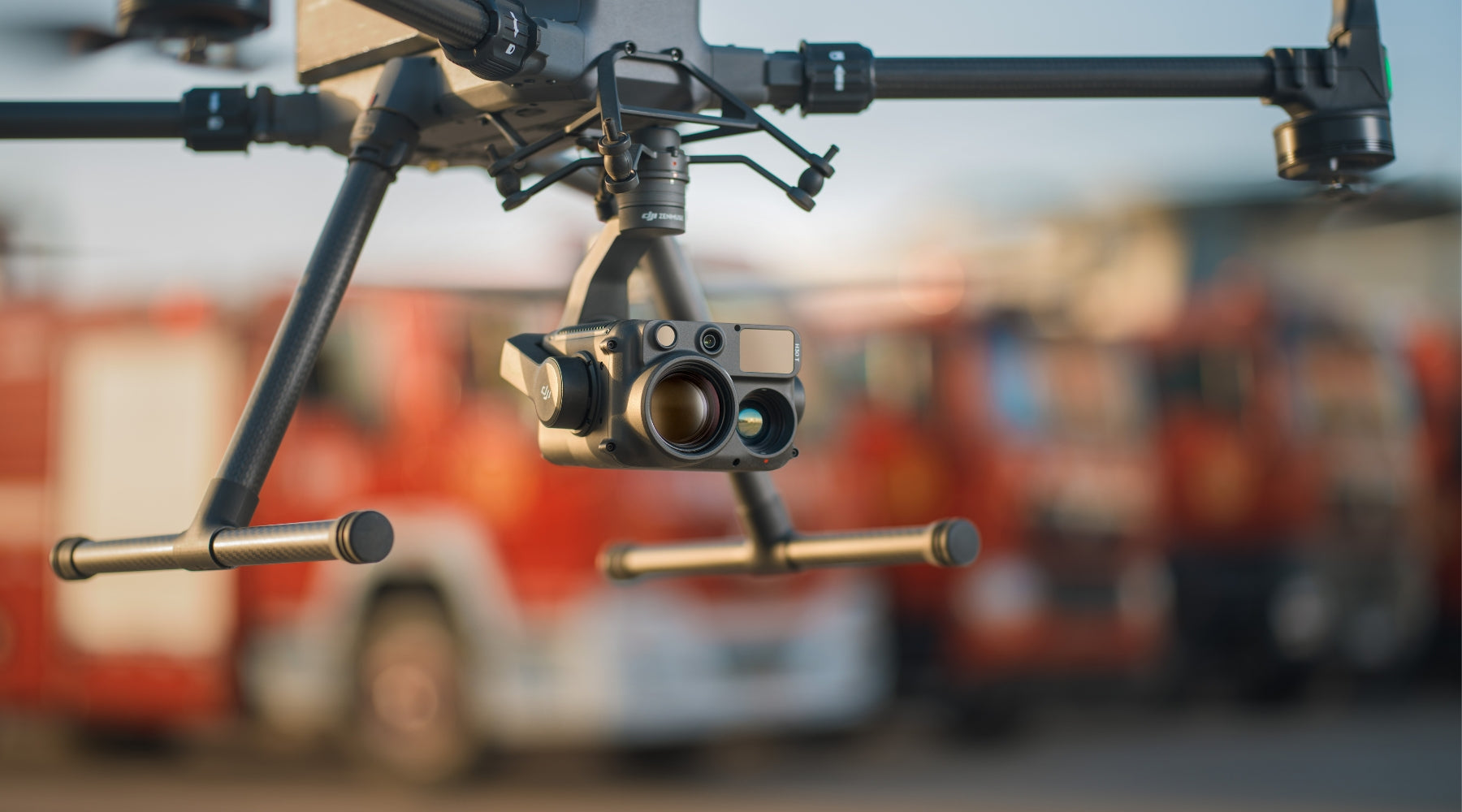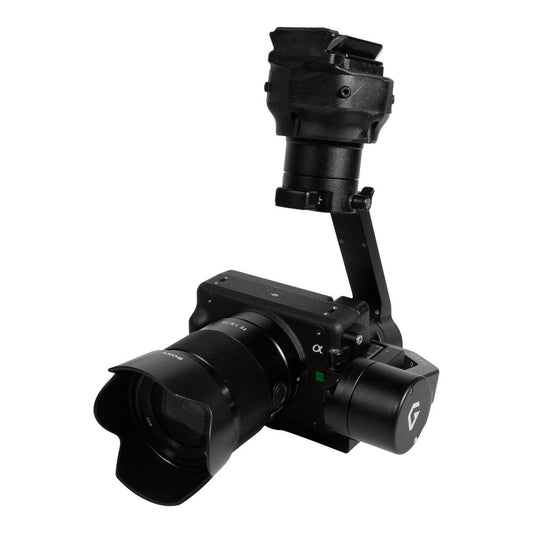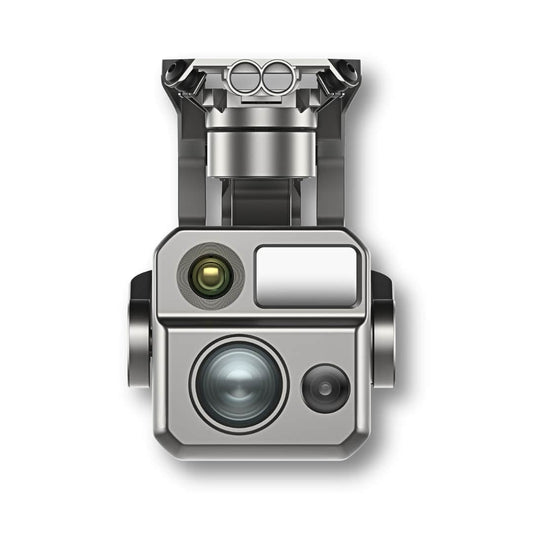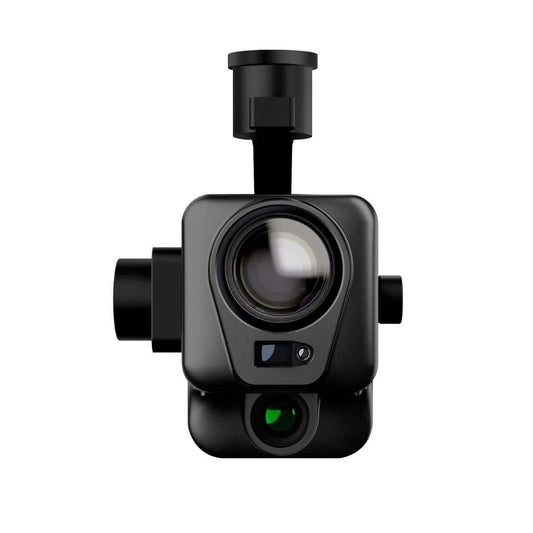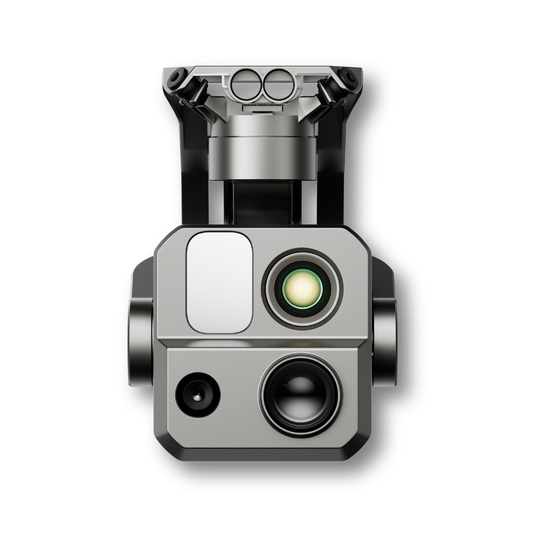Thermal Cameras for Enterprise Drones
Thermal cameras have transformed the way professionals approach complex challenges across various industries. By integrating advanced infrared imaging technology with drones, these tools provide unparalleled insights that were once out of reach. Thermal cameras allow enterprise drones to detect, capture, and analyze heat patterns from the air, enabling precision, efficiency, and safety across critical applications.
How Thermal Cameras Work
Thermal cameras use infrared sensors to detect heat energy emitted by objects, even in conditions where visibility is limited. Unlike traditional cameras that rely on visible light, thermal cameras detect infrared radiation, converting it into electronic signals to create detailed thermal images or thermograms.
Thermal imaging operates within specific infrared spectrum ranges:
- Near-Infrared (Near-IR): Used for applications involving high temperatures or specialized materials.
- Mid-Infrared (Mid-IR): Ideal for detecting heat emitted by objects in everyday and industrial environments.
- Far-Infrared (Far-IR): Widely used in drone thermal cameras for observing thermal radiation in cooler conditions.
These cameras excel in complete darkness, through smoke, fog, or other visual obstructions, making them invaluable in safety-critical and inspection-based scenarios.
Applications of Thermal Cameras:
- Public Safety: Detect hidden suspects, monitor crowds, or locate individuals in low-visibility situations. Police and security teams rely on thermal imaging for non-invasive surveillance and emergency responses.
- Inspection: Identify structural issues such as electrical faults, heat leaks, or moisture damage in construction and industrial facilities. Radiometric thermal cameras enable real-time, pixel-level temperature measurements for precision analysis.
- Search and Rescue: Locate missing persons in disaster zones, whether trapped under debris, lost in dense forests, or obscured by smoke. Thermal imaging enhances visibility and reduces search times.
- Agriculture: Optimize crop health and irrigation by identifying areas of stress or under-watering. Thermal cameras detect heat variations that indicate plant health, enabling better resource management.
- Firefighting: Assess firegrounds and locate hotspots with precision. Infrared imaging provides situational awareness to firefighting teams, improving safety and efficiency during operations.
- Energy and Utilities: Inspect powerlines, solar panels, and other energy infrastructure for faults or inefficiencies, ensuring consistent service and reducing downtime.
DJI’s Cutting-Edge Thermal Camera Solutions
Zenmuse H20T
The DJI Zenmuse H20T combines a thermal sensor, zoom camera, wide-angle lens, and laser rangefinder into one compact payload. Features include:
- High-resolution 640x512 thermal imaging for detailed data collection.
- Radiometric functionality for pixel-level temperature readings.
- Hybrid display options with thermal and visual overlays for enhanced situational awareness.
Zenmuse H20N
Equipped with night vision capabilities, the H20N integrates thermal and starlight sensors for low-light conditions. It’s ideal for surveillance, security, and nighttime operations.
Smart Features of DJI Payloads:
- Intelligent tracking modes to automate inspection and rescue missions.
- Seamless integration with DJI Matrice drones for efficient operation.
- Advanced software compatibility with DJI Pilot 2 for real-time data processing.
FLIR Thermal Cameras: Setting Industry Standards
Teledyne FLIR has been a pioneer in thermal imaging technology, offering payloads tailored for drones like the DJI Matrice series and FLIR’s SIRAS enterprise UAV.
FLIR Vue TZ20 Series
- Dual thermal cameras offering wide and narrow fields of view.
- Radiometric functionality for precise temperature analysis.
FLIR Vue Pro:
- Designed for aerial inspection and research, offering real-time thermal data with advanced analytics.
FLIR’s solutions are built to meet the needs of professionals in energy, utilities, public safety, and beyond, ensuring reliable performance in critical scenarios.
Key Features of Thermal Cameras
- High-Resolution Imaging: Advanced sensors provide detailed thermographic visuals, critical for inspections and safety operations.
- Radiometric Capability: Enables precise temperature analysis, crucial for industrial and environmental applications.
- Environmental Resilience: Operate in extreme temperatures and challenging weather conditions with high IP ratings.
- Real-Time Processing: Access immediate insights with integrated software like DJI Pilot 2 and FLIR tools.
- Dual-Sensor Integration: Combine thermal and visual imaging for a comprehensive view of any scene.
Future Trends in Thermal Drone Technology
As thermal imaging technology continues to evolve, the integration of artificial intelligence (AI) and machine learning (ML) is set to redefine what thermal drones can achieve. These advancements promise to enhance operational efficiency and expand the range of applications in unprecedented ways.
AI-Driven Thermal Analytics
AI-powered software can analyze thermal images in real time, identifying patterns and anomalies that human operators might miss. For example:
- Predictive Maintenance: AI can predict equipment failures by detecting subtle temperature changes over time.
- Wildfire Prevention: Intelligent algorithms can pinpoint high-risk areas by analyzing vegetation heat patterns and dryness levels.
Edge Computing for Faster Data Processing
Thermal drones are increasingly being equipped with edge computing capabilities. This means that data processing happens on the drone itself, reducing latency and enabling faster decision-making in critical situations like search and rescue or disaster response.
Integration with IoT Networks
The Internet of Things (IoT) will play a pivotal role in connecting thermal drones with broader ecosystems, such as smart cities or industrial operations. Imagine drones autonomously communicating with firefighting systems or energy grids to provide instant actionable insights.
Improved Thermal Sensor Miniaturization
As sensors become smaller and more efficient, even compact drones like the DJI Mini Series may soon feature basic thermal imaging capabilities. This democratizes access to thermal technology, making it available to smaller businesses and individual users.
Advanced Multi-Spectral Integration
The future will see more drones combining thermal imaging with multi-spectral and hyperspectral cameras, enabling deeper insights into agricultural health, water management, and even environmental conservation.
By staying at the forefront of these technological advancements, DSLRPros ensures that your thermal imaging solutions are always ahead of the curve, offering the most innovative tools to meet tomorrow's challenges today.
Why DSLRPros is Your Trusted Source for Thermal Cameras
At DSLRPros, we are dedicated to providing industry professionals with high-quality thermal camera solutions tailored to their specific needs.
- Expert Guidance: Our team of specialists offers personalized recommendations based on your operational goals.
- Comprehensive Inventory: Choose from a curated selection of DJI and FLIR thermal cameras designed for enterprise applications.
- Unmatched Support: From installation to operation, we ensure you get the most out of your thermal imaging payload.
Whether you’re in search of a complete drone system or upgrading your current platform with thermal capabilities, DSLRPros has you covered. Contact us at (877) 299-1075 to learn more or explore our listings online to revolutionize your operations with cutting-edge thermal technology.

















